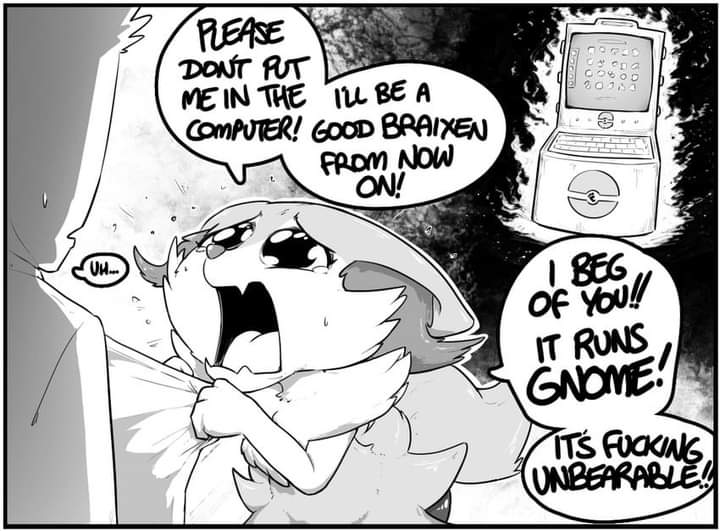this post was submitted on 26 Jun 2024
794 points (94.4% liked)
linuxmemes
21355 readers
1533 users here now
Hint: :q!
Sister communities:
Community rules (click to expand)
1. Follow the site-wide rules
- Instance-wide TOS: https://legal.lemmy.world/tos/
- Lemmy code of conduct: https://join-lemmy.org/docs/code_of_conduct.html
2. Be civil
- Understand the difference between a joke and an insult.
- Do not harrass or attack members of the community for any reason.
- Leave remarks of "peasantry" to the PCMR community. If you dislike an OS/service/application, attack the thing you dislike, not the individuals who use it. Some people may not have a choice.
- Bigotry will not be tolerated.
- These rules are somewhat loosened when the subject is a public figure. Still, do not attack their person or incite harrassment.
3. Post Linux-related content
- Including Unix and BSD.
- Non-Linux content is acceptable as long as it makes a reference to Linux. For example, the poorly made mockery of
sudoin Windows. - No porn. Even if you watch it on a Linux machine.
4. No recent reposts
- Everybody uses Arch btw, can't quit Vim, and wants to interject for a moment. You can stop now.
Please report posts and comments that break these rules!
Important: never execute code or follow advice that you don't understand or can't verify, especially here. The word of the day is credibility. This is a meme community -- even the most helpful comments might just be shitposts that can damage your system. Be aware, be smart, don't fork-bomb your computer.
founded 1 year ago
MODERATORS
you are viewing a single comment's thread
view the rest of the comments
view the rest of the comments

Up to 2.x, GNOME used what was basically the MacOS philosophy: make things easy and simple and intuitive, but if the user wants finer control and power features, make sure it's still possible somehow. GNOME 3 and later pretty much adopted the philosophy that there's the GNOME path of simplicity and streamlining, and power user functionality is going to be removed from the core and relegated to extensions. And, of course, GNOME started requiring boatloads of memory to run, which to me didn't go hand in hand with "simplicity".
I eventually settled on using XFCE, because it didn't have the bloat and still had enough customisability. Really good environment for old and underperforming systems. If I'm using a modern high performance system, I'm actually pretty impressed by what KDE Plasma is doing these days.